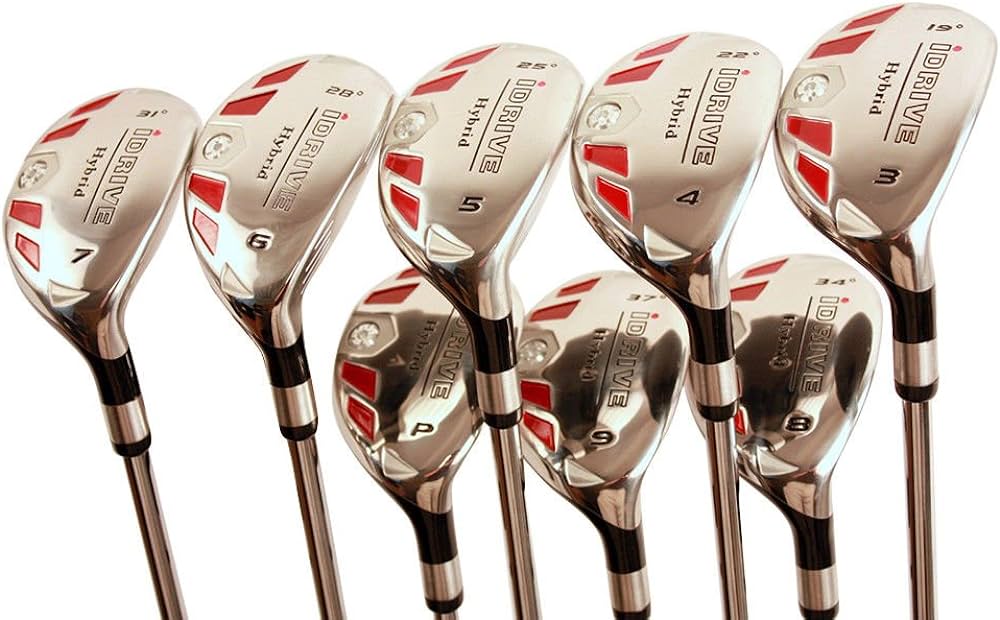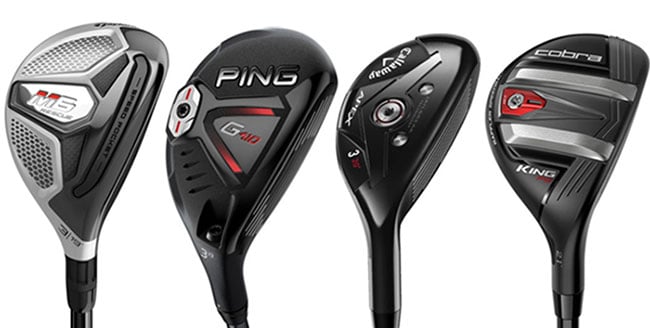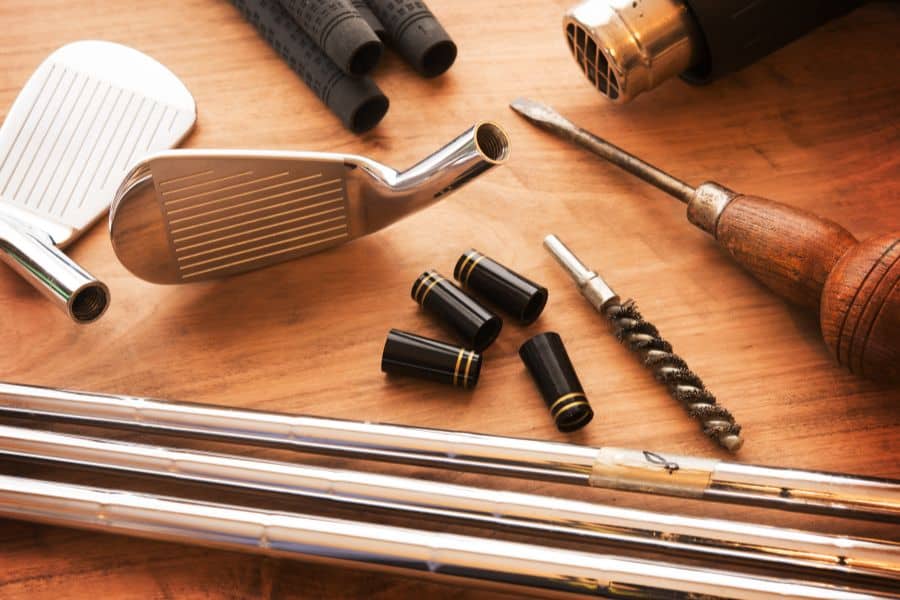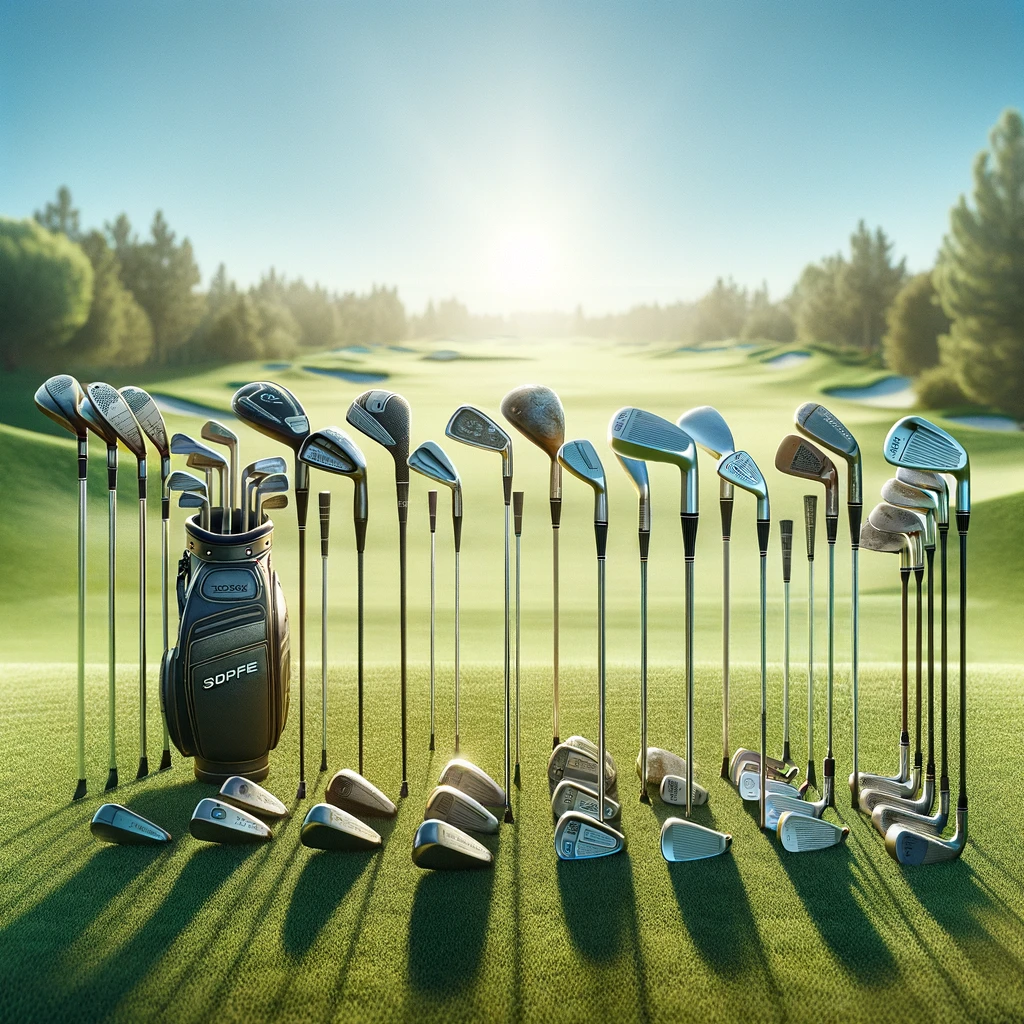Unveiling the Truth: The Difference Between Cheap and Expensive Golf Clubs
Hey there, fellow golf enthusiast! Are you on a quest to up your golf game and wondering if splurging on those shiny, high-end golf clubs is the secret sauce to shaving strokes off your score? You’re not alone in this fairway conundrum. The truth is, the right golf club can feel like a magic wand in your hands, transforming your game from the ground up. But with the dizzying array of options out there, from budget-friendly starters to bank-breaking pro models, it’s easy to get lost in the specs.
In our deep dive today, we will unravel the mysteries of golf clubs, from why some come with a hefty price tag to whether they truly make a difference in your play. We’ll talk about what goes into making these clubs, why some are pricier than others, and, most importantly, how they can impact your game. From the craftsmanship behind the clubs to the personalized fit they offer, we’re covering all bases to help you make an informed decision.
So, grab your favorite golf hat, and let’s embark on this journey together. By the end of our chat, you’ll be equipped with the knowledge to choose your next set of clubs wisely—whether that means investing in a luxurious set that promises to elevate your game or finding value in a more affordable option that suits your skill level and budget. Let the adventure begin!
Key Takeaways:
- Choosing the right golf club is crucial for optimal performance and comfort on the course.
- Price discrepancy between cheap and expensive golf clubs is influenced by factors like materials used, technology, and customization options.
- While cheap golf clubs may offer a lower upfront cost, expensive clubs may provide better performance, durability, and comfort in the long run.
The Importance of Choosing the Right Golf Club
Selecting the proper golf club is crucial in enhancing your performance and comfort on the course.
.jpg)
The choice of golf clubs can significantly impact your game, considering a myriad of factors.
Technology has revolutionized the golf industry, leading to more forgiving clubs, and offering greater distance and accuracy. The materials used, such as titanium and carbon fiber, affect the club’s weight, feel, and performance. It’s essential to match the club to your player ability level, as a pro’s club won’t suit a beginner. Understanding your swing speed, skill level, and playing style is paramount when deciding on the right club.
Also Read: Best Budget Golf Clubs
Understanding the Role of Golf Clubs in Your Game
Golf clubs play a vital role in your game, with each type such as drivers, irons, wedges, and putters serving specific purposes based on player ability and shot requirements.

Regarding drivers, these clubs are designed for long-distance shots off the tee, with larger clubheads and longer shafts to generate maximum distance.
On the other hand, irons are versatile clubs used for a variety of shots from different distances on the fairway or rough.
Wedges, which include pitching, gap, sand, and lob wedges, are essential for approach shots, chip shots, and getting out of bunkers effectively.
Putters are crucial for precision on the green, helping players sink those crucial short putts.
Impact of Golf Clubs on Performance and Comfort
The performance and comfort levels in golf are greatly influenced by the technology, materials, quality, and customizability of the golf clubs used.
Technology plays a crucial role in modern golf clubs, with advancements like adjustable weights, carbon fiber shafts, and clubhead design optimizing performance. The choice of materials such as titanium, steel, or aluminum directly impacts the feel and distance of each shot. High quality craftsmanship ensures durability, consistency, and overall performance on the course.
Moreover, customizability allows players to fine-tune their clubs to fit their unique swing characteristics, body type, and playing style, leading to enhanced accuracy and comfort. Selecting the right combination of flex, loft, and grip size can significantly improve a player’s comfort and confidence during each round.
Factors to Consider When Choosing Golf Clubs
When selecting golf clubs, factors such as technology differences, custom-built options, counterfeit risks, and reputable brands should be carefully considered.

Technology differences in golf clubs can significantly impact your game, with features like adjustable loft settings for drivers, weight distribution for irons, and forgiveness in putters affecting performance.
Custom-built options allow for personalized specifications based on your swing style, height, and preferences, optimizing your game.
Counterfeit risks are prevalent in the golf industry, so purchasing from trusted sources is crucial to avoid low-quality imitations. Reputable brands like Titleist, Callaway, and TaylorMade offer quality assurance, durability, and innovative designs, making them popular choices among golfers.
Quality of Materials Used in Golf Clubs
The quality of materials and the manufacturing process are crucial aspects to consider when evaluating golf clubs, especially in the case of forged clubs that offer exceptional value.
The materials used in manufacturing golf clubs significantly influence their cost and performance. Expensive golf clubs are typically made from higher-grade metals, such as titanium and carbon fiber composites, which offer superior strength, lightweight properties, and enhanced flexibility. In contrast, cheaper clubs might use less sophisticated materials like zinc or aluminum alloys, which are heavier and offer less precision in shots.
Forged clubs are renowned for their superior feel and performance on the golf course. The forging process involves heating a single piece of metal and then shaping it with extreme pressure to create a clubhead that is denser and more precise. This results in a club that provides better feedback, control, and consistency in every shot.
Forged clubs are known for their exceptional craftsmanship and attention to detail, ensuring that each club is meticulously made to meet the highest standards. The use of high-quality materials combined with expert craftsmanship results in clubs that not only look great but also perform exceptionally well on the course.
Technology and Innovation in Golf Club Design
Innovation in golf club design revolves around the integration of advanced materials like titanium, steel, and carbon fiber, impacting key components such as shafts and club heads.

High-end golf clubs often embody the latest technological advancements designed to improve game performance. This includes innovations in aerodynamics, clubface technology to increase sweet spot size, and shaft improvements for better flex and control. These technological enhancements require extensive research and development, contributing to the higher cost of premium clubs. On the other hand, budget clubs tend to utilize older or more basic technology, focusing on cost-efficiency over cutting-edge performance.
These materials have revolutionized the way clubs are built and perform on the course. Titanium, known for its strength and lightweight characteristics, is often used in club heads to maximize power and accuracy in each swing. Steel, on the other hand, provides durability and control, especially in the shafts, offering players a consistent feel throughout their game.
Carbon fiber, a newer addition to the mix, offers a unique combination of strength and flexibility, allowing for customizable designs that cater to different player preferences. The integration of these materials has not only improved the performance of golf clubs but also enhanced the overall experience for golfers at every skill level.
Customization and Personalization Options
Customization and personalization options in golf clubs allow players to tailor their equipment for optimal performance and comfort, ensuring a precise fit and high-quality experience.
One of the standout features of expensive golf clubs is the ability to customize them to fit an individual’s playing style, physique, and preferences. Custom fitting can involve adjusting the shaft length, lie angle, grip size, and even the weight distribution of the clubhead, ensuring the golfer can achieve optimal performance. Cheap golf clubs, while occasionally offering minimal customization options, typically come in standard sizes and configurations, which might not suit all players equally.
Regarding golf, having clubs that are customized to your specific needs can make a significant difference in your game. A tailored approach to your equipment can help enhance your swing, accuracy, and overall enjoyment on the course. By adjusting factors such as club length, shaft flex, grip size, and lie angle to match your unique swing characteristics, you can achieve more consistent results and better control over your shots.
Personalized clubs are crafted with higher quality materials and construction methods, ensuring durability and performance over time. These custom-made clubs are designed to suit your playing style and physical attributes, ultimately leading to improved comfort, confidence, and results on the course.
Brand and Prestige
The brand name and prestige associated with golf clubs can also affect their price. Established brands with a strong presence on professional tours often charge a premium for their products, leveraging their reputation for quality and performance. These brands also invest heavily in marketing and securing endorsements from top players, costs that are reflected in the price of their clubs. In contrast, less well-known or newer brands might offer their clubs at lower prices to attract customers, despite potentially comparable quality.
Durability and Longevity
Finally, the durability and longevity of golf clubs are closely tied to their price. Expensive clubs are designed to withstand the rigors of frequent play and maintain their performance characteristics over time, thanks to their high-quality materials and construction. Cheaper clubs, while capable of offering good performance initially, may show signs of wear and decline in performance sooner, necessitating more frequent replacements.
Price Discrepancy Between Cheap and Expensive Golf Clubs
The price discrepancy between cheap and expensive golf clubs reflects varying levels of quality, technology, and performance features offered in the market.
Regarding cheap golf clubs, the main focus is often on affordability. These clubs are typically made from more budget-friendly materials, such as lower grade steel or aluminum, which may impact their durability and overall performance. In contrast, expensive golf clubs are crafted using premium materials like high-quality carbon fiber or titanium, enhancing their strength and precision.
The advanced technology integrated into expensive clubs, such as adjustable weights, specialized shaft designs, and cutting-edge club head shapes, contributes to improved accuracy and distance control. On the other hand, cheaper options may lack these innovative features, resulting in a less customizable and versatile golfing experience.
In terms of performance, expensive golf clubs often deliver superior results on the course due to their meticulous craftsmanship and advanced engineering. The precise weight distribution, aerodynamic designs, and enhanced sweet spots found in high-end clubs can lead to more consistent swings and better shot outcomes compared to their cheaper counterparts. While affordable clubs may still get the job done for casual players or beginners, serious golfers looking to elevate their game often seek the added benefits that come with investing in top-tier equipment.
Exploring the Price Range of Golf Clubs
The price range of golf clubs can vary significantly, with premium brands like Honma, Miura IC-601, and PXG commanding higher prices for their superior quality and performance.
These premium brands are recognized for their innovative technology, precision craftsmanship, and extensive research that goes into designing each club. The materials used in their construction, such as titanium, carbon fiber, and high-grade steel, contribute to their durability and optimal performance on the golf course.
The branding and marketing strategies of Honma, Miura IC-601, and PXG play a crucial role in positioning them as luxury choices for serious golfers who value top-tier equipment. Their limited production runs and customized options further elevate their exclusivity and desirability among enthusiasts.
Reasons Behind the Price Variation
The price disparity in golf clubs can be attributed to factors like brand reputation, technological advancements, and the overall quality of materials used in manufacturing.
Brand recognition plays a crucial role in determining the price of golf clubs. Renowned brands with a strong market presence often command higher prices due to their reputation for quality and performance. Technological innovations incorporated into club designs, such as adjustable features and enhanced aerodynamics, contribute to cost discrepancies.
The quality of materials used in manufacturing also impacts pricing decisions significantly. Clubs made from premium materials like titanium or carbon fiber tend to be more expensive than those made from standard alloys. The durability and performance benefits of these high-quality materials justify the higher price points set by manufacturers.
Cost-Benefit Analysis of Cheap vs. Expensive Golf Clubs
Conducting a cost-benefit analysis between cheap and expensive golf clubs involves evaluating the value proposition, performance benefits, and long-term durability to make an informed purchasing decision.
Regarding cheap golf clubs, they are usually more budget-friendly upfront, making them accessible to beginners or occasional golfers. These clubs may lack the advanced technology and materials found in pricier options, affecting their performance and durability.
On the other hand, expensive golf clubs often boast cutting-edge designs, high-quality materials, and superior craftsmanship, resulting in enhanced precision and control on the course. Despite the initial higher cost, premium clubs are built to last and withstand frequent use, offering better long-term value.
Performance Impact
Comparing the performance and durability of cheap and expensive golf clubs reveals differences in longevity, consistency, and overall playability that impact player experiences on the course.

One of the key factors that sets apart cheap and expensive golf clubs is the materials used in their construction. Expensive clubs often utilize high-quality materials like titanium and carbon fiber, leading to enhanced performance and durability.
In contrast, cheap clubs are usually made of lower-grade materials, which can affect their longevity and consistency on the course. These differences are crucial in determining how well a player can trust their equipment during crucial shots.
Longevity is a significant consideration when it comes to golf clubs. Expensive clubs are engineered to withstand the wear and tear of regular use, offering players a longer-lasting investment compared to cheaper alternatives.
Impact on Game Improvement
Expensive golf clubs are engineered with precision to optimize every aspect of the game, from driving distance to shot accuracy and control on the green. The advanced materials and technology in these clubs can significantly enhance performance, especially for players who have refined their technique. For instance, the superior spin control and feel of a high-end wedge can improve a player’s short game, while the forgiving nature of premium drivers can enhance tee shots. Conversely, cheap golf clubs, while capable of delivering satisfactory performance, may lack the fine-tuning and advanced features that facilitate game improvement in more skilled players.
Professional vs. Amateur Needs
For professional golfers and serious amateurs, the marginal gains in performance offered by expensive golf clubs can be the difference between winning and losing. These players benefit from the customization and advanced technology that match their high skill level. However, beginners and recreational players might not see a significant difference in their game with expensive clubs, as their basic skills are still developing. In such cases, the primary focus should be on mastering the fundamentals of the swing rather than relying on equipment to improve performance.
Testing the Performance of Cheap Golf Clubs
Testing the performance of cheap golf clubs can provide beginners with valuable insights into the basic features, functionality, and suitability of budget-friendly equipment for skill development.
Beginner-friendly golf clubs often feature larger clubface sizes, forgiving sweet spots, and lightweight graphite shafts to help learners achieve more consistent shots. These inexpensive options typically have perimeter weighting to enhance stability and forgiveness, crucial for players still mastering their swings.
Low-cost clubs often prioritize ease of use and distance, aiding novices in gaining confidence and improving their game. Their affordability also makes them accessible to a wider range of aspiring golfers, encouraging more individuals to take up the sport without breaking the bank.
Psychological Effects and Confidence
The impact of golf clubs on a player’s mental game and confidence can be as significant as their physical performance enhancements.
The Placebo Effect
Investing in expensive golf clubs can lead to a placebo effect, where the player’s confidence and belief in their equipment translate into improved performance, even if the physical benefits are marginal. The psychological boost of using premium clubs, endorsed by professionals and crafted with cutting-edge technology, can encourage a more focused and committed approach to the game. This mental edge can make a notable difference in a player’s performance, underscoring the importance of confidence in golf.
Perception of Skill and Commitment
The type of equipment a golfer uses can also reflect their commitment to the sport and influence perceptions of their skill level among peers. Sporting expensive, top-of-the-line clubs can project a serious and dedicated image, potentially leading to greater respect from fellow golfers. This perception, whether accurate or not, can boost a player’s self-esteem and confidence on the course. Conversely, using cheap or outdated equipment might lead to unfounded judgments about a player’s commitment or skill, affecting their social experience in the golfing community.
In summary, while the physical performance differences between cheap and expensive golf clubs are significant, the psychological impact of using premium equipment should not be underestimated. Confidence, after all, is a critical component of success in golf. Whether it’s the placebo effect of using high-end clubs or the perception of skill and commitment they convey, the mental and emotional advantages of investing in quality golf equipment can be just as valuable as the tangible performance benefits.
Evaluating the Longevity of Expensive Golf Clubs
Assessing the longevity of expensive golf clubs involves analyzing the technological advancements, material durability, and craftsmanship that contribute to their extended lifespan and premium performance.
One of the key elements that set high-end golf clubs apart is the utilization of cutting-edge materials such as titanium and carbon fiber, renowned for their strength and lightweight properties. These materials not only ensure that the clubs can withstand the wear and tear of the game but also provide a significant boost in performance due to their superior energy transfer capabilities.
- The intricate craftsmanship involved in the production of premium golf clubs, often done by skilled artisans, plays a crucial role in their longevity. The attention to detail in the design and assembly process ensures that every club is meticulously crafted to meet strict quality standards.
- The technological innovations integrated into these clubs, such as adjustable weighting systems and advanced clubhead designs, not only enhance their durability but also offer golfers the flexibility to fine-tune their equipment according to their playing style.
Comfort and Feel of Golf Clubs
The comfort and feel of golf clubs are essential aspects that impact a player’s confidence, swing consistency, and overall enjoyment on the course.
When a player feels comfortable holding a club, it promotes a sense of familiarity and trust in their equipment, leading to increased confidence in their shots. The feedback and response a golfer receives from the club during the swing greatly influences their swing dynamics and shot control. A club that provides a good feel allows the player to better sense the impact with the ball, leading to improved precision and consistency in their shots. The right comfort and feel in golf clubs can enhance a player’s performance and contribute to a more enjoyable round of golf.
Importance of Comfort in Golf Club Selection
Comfort plays a pivotal role in golf club selection, especially for custom-built options tailored to individual preferences, skill levels, and playing styles.
The right level of comfort can make a significant difference in how well a golfer performs on the course. When a player feels at ease with their clubs, they exude confidence and can focus better on their game.
Custom-built solutions offer the advantage of fine-tuning every aspect of the club to suit the player perfectly, from grip size to shaft flexibility. This personalized approach ensures that the player’s comfort is prioritized above all else, leading to enhanced performance and overall satisfaction with their equipment.
Feedback and Reviews on the Feel of Different Golf Clubs
Feedback and reviews provide valuable insights into the feel and performance of different golf clubs, helping players make informed decisions based on user experiences and recommendations.
Regarding choosing the right golf club, there is a myriad of factors to consider. Feedback from fellow golfers and expert reviews can be a game-changer.
User experiences shared online or through word of mouth can offer a glimpse into how a club performs in real-game situations. By reading reviews, golfers can gauge the quality of materials, durability, comfort, and overall performance of a club.
Recommendations from trusted sources can also play a crucial role in guiding players towards clubs that suit their playing style and skill level.
Customization Options
Customization options offer a unique advantage with expensive golf clubs, allowing players to tailor specifications, fittings, and personal preferences for a bespoke playing experience.

When investing in high-end golf clubs, players have the opportunity to enhance their game through customization. By adjusting factors such as shaft material, length, flex, and grip size to match their swing style and physical attributes, golfers can optimize their performance on the course.
Personalized fittings ensure that the clubs are tailored to the individual’s unique needs, leading to greater comfort, consistency, and accuracy in each shot. This level of detail not only boosts player confidence but also enhances overall satisfaction with their equipment, making the game more enjoyable and rewarding.
Availability of Custom Fitting for Expensive Golf Clubs
Expensive golf clubs often offer custom fitting services to ensure precise adjustments for player specifications, enhancing the overall quality and performance tailored to individual needs.
Custom fitting services have become a crucial component in the world of premium golf clubs, allowing players to optimize their equipment to suit their unique playing style and physical attributes. These tailored adjustments not only enhance the accuracy and consistency of shots but also improve the overall comfort and confidence of the golfer on the course.
Custom fitting involves a detailed analysis of various factors such as swing speed, grip size, club length, and lie angle to create a set of clubs that perfectly align with the player’s strengths and preferences. This level of personalization results in increased performance, greater distance, and ultimately, higher player satisfaction.
Limitations in Customization with Cheap Golf Clubs
Cheap golf clubs may have limitations in customization options, restricting players from fine-tuning specifications and personalizing their equipment to the same extent as premium offerings.
These budget-friendly clubs often come in standard sizes, shaft lengths, and flex options, which may not cater to the unique needs and preferences of individual players. The limited choices in grips and club head designs further constrain players from creating a set that aligns perfectly with their playing style and comfort.
Consequently, the impact of these constraints on players’ performance can be significant. Suboptimal equipment fit can lead to inconsistency in shots, reduced distance, and overall dissatisfaction with the game experience.
When to Invest in Expensive Golf Clubs
Deciding to invest in expensive golf clubs is a significant decision that should be based on several factors beyond just the financial commitment. Here’s how to know when it’s the right time to invest:
Assessing Your Level and Goals
Begin by evaluating your current skill level and long-term golfing goals. If you’re transitioning from a beginner to an intermediate or advanced player and your current set no longer matches your skill set, it might be time to consider an upgrade. Expensive clubs can offer the advanced technology and customization needed to fine-tune your game as you progress.
Budget Considerations
It’s important to realistically assess your budget and decide how much you’re willing to spend. Investing in high-end clubs can be worthwhile, but not at the expense of financial strain. Consider setting aside savings specifically for this purpose or look for financing options that many retailers offer.
The Importance of Testing
Before making a purchase, extensively test various clubs to find the right fit for your game. Many golf shops and fitting centers offer demo days or fitting sessions. Utilize these opportunities to see if the performance improvements justify the cost.
Also Read: How to Maintain your Golf Set
Alternatives and Compromises
For golfers who aren’t ready to commit to the high price tag of premium clubs, there are several alternatives and compromises to consider:
Mid-Range Clubs
Many reputable brands offer mid-range clubs that balance quality and affordability. These clubs often incorporate some of the advanced technologies found in more expensive models but at a more accessible price point. They can be a great option for golfers seeking improvement without breaking the bank.
Pre-Owned High-End Clubs
Purchasing pre-owned high-end clubs is an excellent way to get quality equipment at a fraction of the cost. Many retailers and online platforms specialize in selling used clubs that are often in very good condition. Look for certified pre-owned programs that offer a guarantee on the quality and condition of the clubs.
Seasonal Sales and Promotions
Taking advantage of sales and promotions can significantly reduce the cost of expensive golf clubs. Retailers often offer discounts during off-peak seasons, holidays, or when newer models are released, making it an ideal time to purchase.
Custom Fitting for Specific Clubs
Instead of purchasing an entirely new set, consider custom fitting for specific clubs that can make the most impact on your game, such as drivers or wedges. This targeted approach allows you to invest in areas that will most improve your performance without the cost of a full set.
Also Read: When to Upgrade your Golf Set
Frequently Asked Questions
What is the real difference between cheap and expensive golf clubs?
The main difference between cheap and expensive golf clubs lies in their materials and technology. Expensive clubs are typically made with high-quality materials and advanced technology, while cheap clubs are made with cheaper materials and less advanced technology.
Do expensive golf clubs really make a difference in performance?
Yes, expensive golf clubs can make a significant difference in performance. The materials and technology used in expensive clubs can improve accuracy, distance, and overall playability. However, this may vary depending on the skill level of the player.
Are cheap golf clubs a good option for beginners?
Cheap golf clubs can be a good option for beginners as they are more affordable and can help them get started with the sport. However, as their skills improve, they may want to invest in better quality clubs to improve their game.
Why are some golf clubs significantly more expensive than others?
The cost of golf clubs can vary due to a number of factors such as brand reputation, materials used, and technology. Some brands may also charge higher prices for their name and reputation, while others may offer more affordable options with similar performance.
Do expensive golf clubs last longer than cheap ones?
Generally, yes. Expensive golf clubs are made with higher quality materials and are built to last longer than cheap ones. However, with proper care and maintenance, even cheap clubs can last for a long time.
Is it worth investing in expensive golf clubs?
The answer to this question depends on personal preference and budget. If you are a serious golfer and want the best performance, investing in expensive golf clubs may be worth it. However, if you are a casual player, cheaper clubs may be a more practical option.



